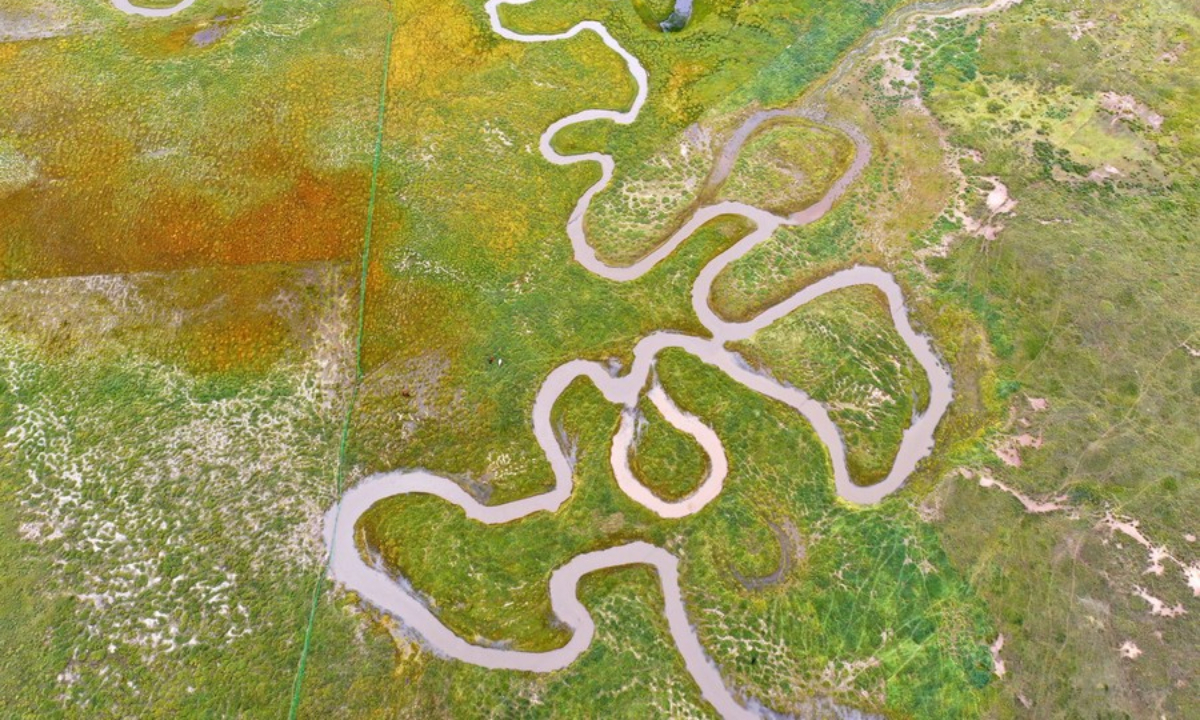
Aerial photo taken on Sep 15, 2021 shows a river near the Qinghai Lake in northwest China's Qinghai Province. Located in the northeastern part of the Qinghai-Tibet Plateau, the Qinghai Lake is key to maintaining the ecological balance in western China. Photo:Xinhua
Chinese researchers have figured out the main factors affecting carbon and nitrogen cycling on the Qinghai-Tibet Plateau, according to a research article published recently in the journal Nature Reviews Earth and Environment.
Sustainable grassland management, ecological engineering and green technology development can curb greenhouse emissions and help maintain the carbon sink function on the plateau, said researchers from the Chinese Academy of Sciences, China's Hohai University and Hunan Normal University.
The Qinghai-Tibet Plateau ecosystem has important ecological functions, such as soil and water conservation, global biodiversity protection, regional climate regulation and carbon sink, the research article stated.
Restoration efforts on the Qinghai-Tibet Plateau drive regional increases in soil carbon and nitrogen stocks.
The researchers deemed that factors such as temperature limits for plant growth, nitrogen limits for ecosystems, carbon limits for soil microorganisms, and soil water limits for arid and semi-arid ecosystems have an important influence on the regional biogeochemical cycles.
The researchers predicted that the Qinghai-Tibet Plateau will continue to function as a net carbon sink, and nitrogen stocks are expected to remain relatively stable there.
